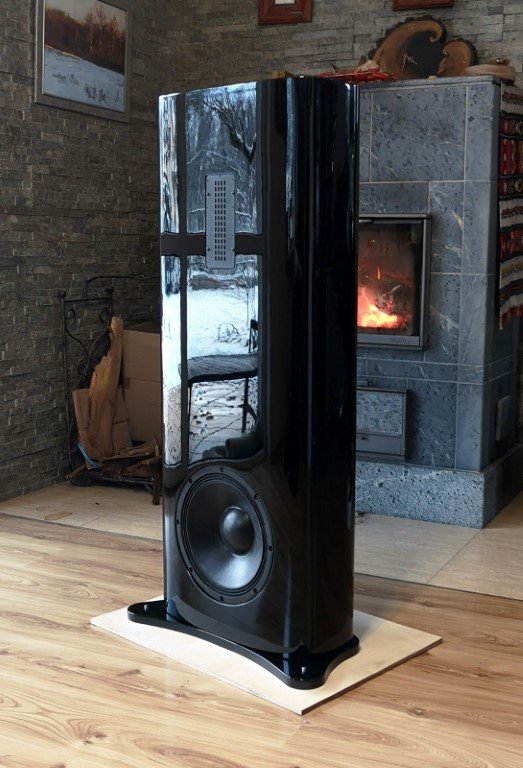Introducing the Vera Audio Coherence 12 speaker. A speaker that now can be pre-ordered for a discount.
The prototype (one of many) without feet attached looked like the picture below (disregard the wooden plate it's standing on).

Since than we have made some smaller changes to the cabinet and base now looks different. Will get back with updated pictures.
In this thread I'l both share design thoughts and measurements along the way. Vera Audio is a company that wants to be be transparent about what we do and share proper measurements.
This is an active design with the choice of either built in Hypex FA252 plate amplifier or sold with an external crossover as miniDSP Flex (various options), Danville dspNexus. DEQX is also possible. 4-channel amplification is needed when choosing an external crossover and this can be chosen freely by the customer.
Unfortunately prices have gone up lately, but prices below for a pair is still possible with pre-orders.
1. A pair with a balanced 4-channel miniDSP Flex: $5300 excl. VAT and excl. shipping
2. A pair with built in Hypex FA252 amp: $6200 excl. VAT and excl. shipping
These prices are for glossy painted cabinet. Veneered cabinet will cost more and may vary with type. We can do custom finishes with pre-orders. Please contact us.
Lead time is approximately 5 months from pre-order. It could go faster, but that's uncertain.
Will get into the design in the coming posts.
The prototype (one of many) without feet attached looked like the picture below (disregard the wooden plate it's standing on).

Since than we have made some smaller changes to the cabinet and base now looks different. Will get back with updated pictures.
In this thread I'l both share design thoughts and measurements along the way. Vera Audio is a company that wants to be be transparent about what we do and share proper measurements.
This is an active design with the choice of either built in Hypex FA252 plate amplifier or sold with an external crossover as miniDSP Flex (various options), Danville dspNexus. DEQX is also possible. 4-channel amplification is needed when choosing an external crossover and this can be chosen freely by the customer.
Unfortunately prices have gone up lately, but prices below for a pair is still possible with pre-orders.
1. A pair with a balanced 4-channel miniDSP Flex: $5300 excl. VAT and excl. shipping
2. A pair with built in Hypex FA252 amp: $6200 excl. VAT and excl. shipping
These prices are for glossy painted cabinet. Veneered cabinet will cost more and may vary with type. We can do custom finishes with pre-orders. Please contact us.
Lead time is approximately 5 months from pre-order. It could go faster, but that's uncertain.
Will get into the design in the coming posts.

















